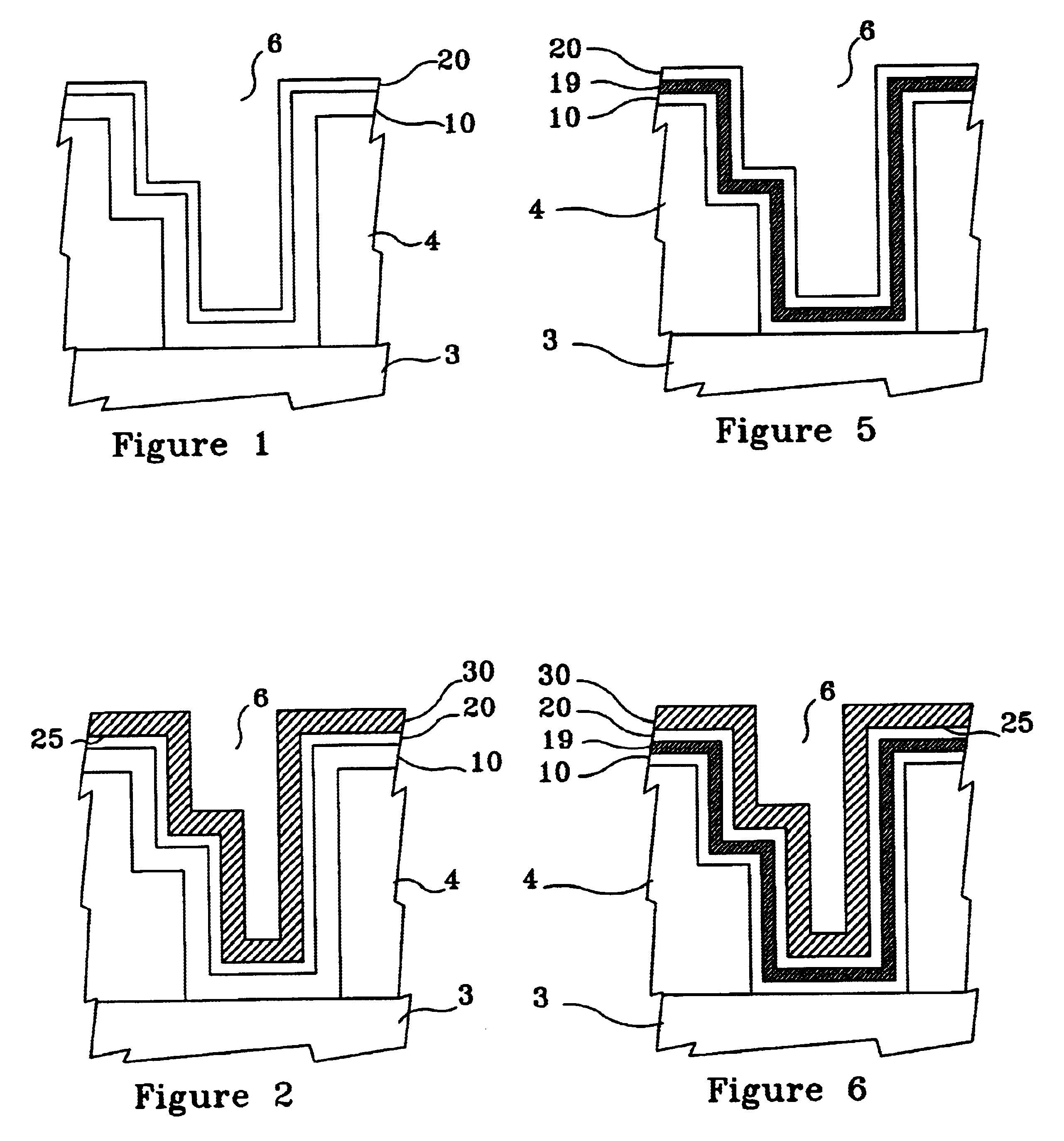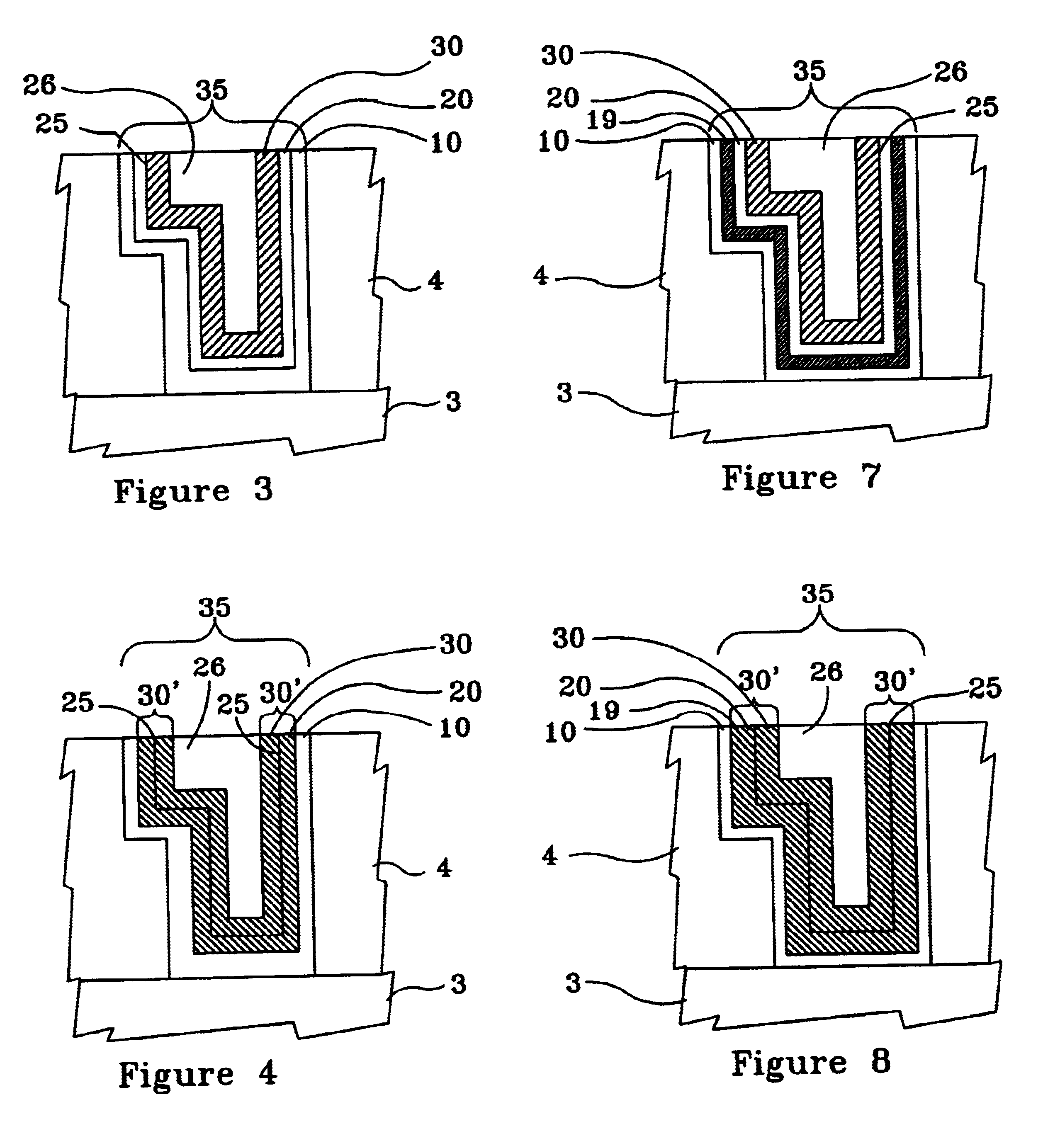Method of reducing electromigration in a copper line by electroplating an interim copper-zinc alloy thin film on a copper surface and a semiconductor device thereby formed
a technology of copper-zinc alloy and thin film, which is applied in the direction of solid-state devices, electrolysis processes, electrolysis components, etc., can solve the problems of not providing a cost-effective method of forming a copper-zinc alloy on a cu interconnect surface, and the less desirable candidate for these higher density devices, etc., to achieve the effect of improving the reliability of cu interconnection, enhancing the electromigration resistance, and improving the corrosion resistan
- Summary
- Abstract
- Description
- Claims
- Application Information
AI Technical Summary
Benefits of technology
Problems solved by technology
Method used
Image
Examples
first embodiment
FIG. 1 illustrates, by example only, a cross-section of a Cu interconnect line 3, comprising Cu, formed on a semiconductor substrate 4 and acting as the bottom portion of a via 6, the via 6 having a optional barrier layer 10, comprising at least one material selected from a group consisting essentially of titanium silicon nitride (Ti.sub.x Si.sub.y N.sub.z), tantalum nitride (TaN), and tungsten nitride (W.sub.x N.sub.y), formed therein and a Cu surface 20, such as a blanket Cu seed layer and a partial thickness plated Cu layer, formed on the optional barrier layer 10, in accordance with the present invention.
FIG. 2 illustrates a cross-section of the Cu interconnect line 3 formed on a semiconductor substrate 4 and acting as the bottom portion of a via 6, the via 6 having the optional barrier layer 10 formed therein and the Cu surface 20 formed on the optional barrier layer 10, as shown in FIG. 1, having an interim conformal Cu--Zn alloy thin film 30 formed and annealed on the Cu surf...
second embodiment
FIG. 5 illustrates, by example only, a cross-section of a Cu interconnect line 3 formed on a semiconductor substrate 4 and acting as the bottom portion of a via 6, the via 6 having an optional barrier layer 10, comprising at least one material selected from a group consisting essentially of titanium silicon nitride (Ti.sub.x Si.sub.y N.sub.z), tantalum nitride (TaN), and tungsten nitride (W.sub.x N.sub.y) in a thickness range of approximately 10 .ANG. to approximately 30 .ANG., formed by a technique such as atomic layer deposition (ALD), atomic layer chemical vapor deposition (ALCVD), or chemical vapor deposition (CVD), an optional underlayer 19, comprising at least one material selected from a group consisting essentially of tin (Sn) and palladium (Pd) in a thickness range of approximately 15 .ANG. to approximately 50 .ANG., formed on the optional barrier layer 10, and a Cu surface 20, comprising electroless Cu in a thickness range of approximately 30 .ANG. to approximately 100 .AN...
PUM
| Property | Measurement | Unit |
|---|---|---|
| thickness | aaaaa | aaaaa |
| thickness | aaaaa | aaaaa |
| thickness | aaaaa | aaaaa |
Abstract
Description
Claims
Application Information
 Login to View More
Login to View More - R&D
- Intellectual Property
- Life Sciences
- Materials
- Tech Scout
- Unparalleled Data Quality
- Higher Quality Content
- 60% Fewer Hallucinations
Browse by: Latest US Patents, China's latest patents, Technical Efficacy Thesaurus, Application Domain, Technology Topic, Popular Technical Reports.
© 2025 PatSnap. All rights reserved.Legal|Privacy policy|Modern Slavery Act Transparency Statement|Sitemap|About US| Contact US: help@patsnap.com



